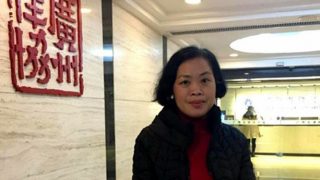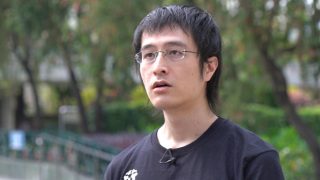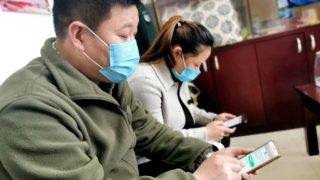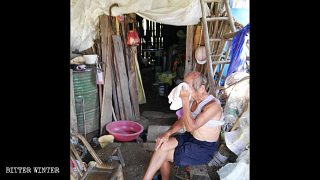A new book by Jennifer Pan shows how the CCP, under the pretext of “elimination of poverty,” uses its “Dibao” livelihood guarantee program to better watch over political and religious dissidents.
by Massimo Introvigne
The failure of Chinese welfare
“Welfare for Autocrats: How Social Assistance in China Care for Its Rulers” (New York: Oxford University Press, 2020) is a brilliant but very technical study, and one where readers would not expect to encounter references to religion. In fact, they are there, and are not unimportant.
The book by Jennifer Pan, an Assistant Professor at Stanford University, is a study of Dibao (低保), a “minimum living guarantee system,” hailed as “the largest unconditional cash transfer program in the world,” and one of the two pillars of Chinese welfare aimed at the “elimination of poverty.” The other pillar is the Tekun program (特困人员救助), the “Assistance for the Especially Poor.” However, in recent years, Tekun has decreased in importance, while Dibao has increased.
With all its emphasis in caring for the poor, Chinese statistics show a harsh inequality. In the late 1990s, China’s economic expansion notwithstanding, the country had “up to 60 million unemployed urban workers.” By 2015, “the share of national income held by the top 10% increased to 41%, while that held by the bottom 50% declined to 15%.” Chinese propaganda can counter that the United States have similar figures. However, the United States do not claim to be a socialist, equalitarian country.
Pan explains that Chinese “welfare systems exacerbated rather than reduced the gap between the rich and the poor.” The rich and the corrupted became skilled at manipulating them.
Enter Dibao
Dibao was introduced by the CCP as a mean to solve the problem, first as an experiment in Shanghai in June 1993. On September 2, 1997, a National Urban Dibao followed, and in July 2007, a National Rural Dibao. Recipients peaked in 2003 at 22.5 million for urban and 53.9 million for rural Dibao, before decreasing to figures such as the urban 12.6 million and the rural 40.5 million in 2017 (by comparison, the total of all Tekun recipients was only 4.7 million).
Dibao is similar to the controversial “reddito di cittadinanza” (basic salary) recently introduced in Italy. Those unable to find work receive an amount of cash every month. The problem is how the citizens “unable to work” are identified.
In China, Pan explains, these are divided in two categories. Those in the first category are unable to work because of personal disabilities or problems in the job market. Those in the second category, however, are unemployed because the CCP prefers that they do not work, and ask them to spend their time in “reeducation” at home. They are part of what the CCP calls “targeted categories,” a term introduced by Chairman Mao in 1956. There is an official list of “targeted categories,” and it includes “those suspected of participating in xie jiao [banned religious movements], sects, secret societies, or illegal religious activities.”
Reeducation at home
According to Pan, Dibao changed substantially after the protests by Falun Gong in 1999. While the most visible reaction by the CCP was the “hard strike” consisting of “mass arrests, imprisonments, and executions,” in fact Falun Gong “altered how the CCP conceptualized stability.” The CCP realized that “striking hard” was necessary but not sufficient. After the Falun Gong protests, the CCP revised its “Comprehensive Management of Public Stability,” which included on the one hand the “hard strike” and the other hand what Pan calls a “seepage” of the security systems into culture, education—and welfare.
Another common misconception, Pan claims, is that “reeducation” in China only occurs in the transformation through education camps and similar jail-like institutions. In fact, millions of Chinese are “reeducated” at home. They are regularly visited by “reeducation teams—composed of residents committee members, block captains, local police, neighborhood watch volunteers, and other community-level party activists and cadres—tasked with regularly visiting the targets of reeducation.” Those in reeducation spend so much time being reeducated that they cannot have a regular job—nor does the CCP believes that it would be a good idea to send them to workplaces where they may “corrupt” others. Consequently, they are supported by Dibao.
Dibao allows for an increased surveillance since to receive Dibao, recipients should report in detail about their daily lives. Not only is “surveillance less noticeable when it is conducted as part of interactions related to the distribution of benefits,” but a triangle of “surveillance, obligation, and dependence” is generated. In the Chinese mindset, those receiving Dibao feel obliged to cooperate with the CCP local representatives bringing the money to them, at least to some extent. They also know that their names are publicly displayed in their neighborhood, and neighbors expect that they behave as loyal Dibao recipients. Finally, Pan notes, the amounts of money they receive are not enough to make them feel free to devote time to mobilize against the CCP, but are “enough to make them dependent.”
Dibao as a tool for repressing banned religions
How this works is document by Pan through her fieldwork in China—where, perhaps unexpectedly, she often encountered religion. She tells the story of the Zhao family from Xi’an, Shaanxi. Mr. Zhao was an engineer not much interested in religion, until his mother-in-law was diagnosed with cancer. This led Mr. Zhao to pray together with members of a group banned as a xie jiao, the Association of Disciples (门徒会 Mentuhui). Eventually, Zhao’s mother-in-law was healed, and the whole family joined Mentuhui in 2012.
What followed shows how the CCP combines “striking hard” with different forms of stability management. Mr. Zhao was arrested and sent to jail, then to a transformation through education camp. His relatives, however, did not go to jail. They were placed under surveillance and entered a program of reeducation at home, combined with Dibao. Pan interviewed a Mrs. Yang, the block captain responsible for bringing Dibao to the Zhao family. She candidly acknowledged that her aim was to “rescue” the family from “dangerous beliefs,” and that she used a carrot-and-stick approach, increasing welfare benefits to the Zhaos if they promised to abandon prayer and other religious practices.
Another category of persons under home reeducation combined with Dibao includes those who have been arrested and released, when the authorities believe their reeducation is not complete. Pan encountered two Falun Gong members who were Dibao recipients in this situation. They were perhaps not entirely persuaded by their reeducation, but “expressed high levels of fear and strong desires to avoid government attention.”
In short, gradually Dibao “became a tool for repression and surveillance,” “a tool for preserving political power, caring not for people but instead for China rulers.”
Some problems for the CCP
Dibao’s “repressive assistance” is not without problems. First, it is expensive, and China’s riches are not unlimited. The result of using Dibao mostly for the surveillance of “targeted categories” and support to home reeducation means that, while the number of these Dibao recipients constantly increases, the number of those who would be entitled to receive Dibao for non-political reasons, i.e the real poor, but do not receive it, increases. This leads to protest that may threaten the very stability the political use of Dibao intends to preserve.
The CCP, however, is not concerned about this “backlash.” It does not like protests in general, but it regards economic protests as less dangerous than those calling for democracy or religious liberty.
Finally, Pan asks whether the political use of Dibao is still needed in 2020, after the CCP reached the record number of 300 million surveillance camera installed in China, and social credit and technology guarantee a 24/7 watch kept on all citizens. Unlike some of its critics, Pan answers, the CCP knows that technology is not infallible. She mentions, for instance, that the police data base PoliceNet is not without holes, and not all crimes are registered there. For all its technological dystopias, the CCP is fully aware that technology will never fully replace human surveillance on a block by block, apartment by apartment basis. Thus, Pan believes, home reeducation programs and the use of Dibao for surveillance purposes will continue.
Western experts in surveillance would comment that the risk of this enormous, dual net of technological and human watch, the latter largely based on spies and delation, is generating a huge number of “false positives,” i.e. citizens who are classified as dangerous to the regime while they are, in fact, inoffensive. However, Pan concludes, all systems should choose between “precision” (minimizing false positives) and “recall” (minimizing false negatives, in this case those who may be really dangerous for the CCP but have not been detected as such). The fact that in Xinjiang tens of thousands of Uyghurs and others who have not done “anything remotely threatening to the regime” are nonetheless kept in the transformation through education camps, proves, according to Pan, that the CCP under Xi Jinping has chosen recall over precision. In less technical terms, the CCP prefers to keep in jail millions of innocents rather than letting even one guilty citizen—guilty, that is, of opposition to the regime—escape.
Source: Bitter Winter



